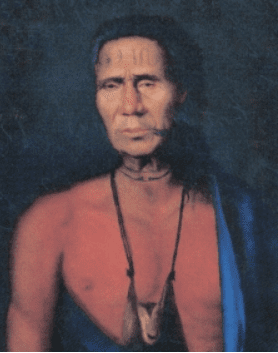The following is reprinted with permission from the archives of the Durand-Hedden House & Garden Association. It originally appeared August 5, 2008. Find this article, along with much more local history at www.DurandHedden.org.
John Kraft, an archaeologist, educator and director of Lenape Lifeways, presented a slide-illustrated lecture at Durand-Hedden in 2005 under the aegis of the Horizons Speakers Bureau of the New Jersey Council for the Humanities, a state partner of the National Endowment for the Humanities.
The earliest residents of the Maplewood-South Orange area were The Lenapes (len-AH-pays) — Native Americans who once populated “a vast domain stretching along the Middle Atlantic coast from New York Bay to Delaware Bay, between the Hudson and Delaware river valleys,” according to Robert Grumet’s book, The Lenapes.

A Long History in New Jersey
Fluted spear points document the arrival of the Lenapes’ ancestors in the Middle Atlantic region 12,000 years ago during the last ice age. Around 1000 BC the advent of the bow and arrow, pottery and gardening made a new, more settled way of life possible for the Lenape people, who lived in New Jersey at the time of European exploration and settlement.
The Lenape – the early 17th century – estimates of the population range from 8,000 to 20,000 — were divided into some 20 bands or villages. Sadly, 125 years later, following the arrival of European explorers and settlers, their numbers had fallen to a few hundred.
Chief Tuscan– Truth or Lore?
Chief Tuscan (or Tuskin), who is said to have lived in our valley, was reputedly born a Mohican. The late Maplewood historian Beatrice Herman wrote that according to James Ricalton, the village’s famous schoolmaster, Chief Tuscan had migrated from Upper New York State, and married an Indian maiden, joining the Lenni Lenape and setting up household with her in the ravine along what is now Tuscan Road.
By one account, when Chief Tuscan died in 1801, members of his tribe staged an elaborate funeral ritual, and he was buried in the vicinity of his home. Some historians, including Mr. Kraft, believe that the Native Americans were long gone from this area by that time.
In the early 1920s, Mr. Ricalton, along with William Sayer, a member of the Board of Education, explored the swampy area near the East Branch of the Rahway River, which runs through Maplewood Memorial Park and the Tuscan School area. Mr. Ricalton collected not only artifacts but stories from descendants of the early residents.

